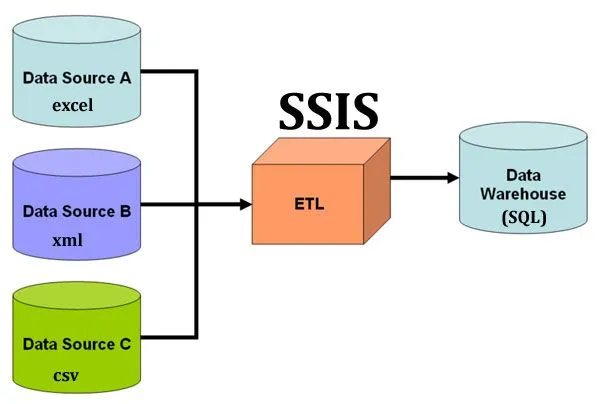SSIS 698: Unlocking Hidden ETL Capabilities for Data Experts

Introduction to SSIS 698
SQL Server Integration Services (SSIS) is a powerful ETL (Extract, Transform, Load) tool used for data integration and transformation. SSIS 698 is an advanced implementation that offers hidden capabilities that many data professionals may not be leveraging effectively. Understanding these features can significantly enhance data workflows, improve automation, and optimize performance.
In this article, we will uncover the secrets of SSIS 698, exploring its core functionalities, hidden capabilities, and best practices. If you are a data expert looking to enhance your ETL processes, this guide will help you unlock SSIS 698’s full potential.
What is SSIS 698?
SSIS 698 is a high-performance ETL tool within the Microsoft SQL Server ecosystem, specifically designed to handle complex data transformation processes. It is widely used for data warehousing, automation, and migration tasks. It integrates seamlessly with various data sources, including SQL databases, flat files, cloud platforms, and third-party applications.
Some key features of SSIS 698 include:
- Data extraction from multiple sources
- Transformation and cleansing of data
- Automated workflows and job scheduling
- Advanced error handling and logging
- Integration with cloud and big data technologies
Hidden ETL Capabilities of SSIS 698

While many users utilize the basic functionalities of SSIS 698, some advanced capabilities remain underutilized. Let’s explore some hidden features that can transform your ETL processes.
1. Advanced Data Cleansing
Data cleansing is a critical part of ETL processes. SSIS 698 offers advanced data profiling tools, fuzzy lookups, and conditional splits that help clean and standardize data effectively.
- Fuzzy Lookup and Fuzzy Grouping: These components enable data deduplication and standardization.
- Conditional Splits: Allow dynamic routing of data based on conditions.
- Data Profiling Task: Identifies inconsistencies and anomalies in datasets.
2. Performance Optimization Techniques
Optimizing SSIS 698 workflows can significantly enhance performance and efficiency. Some best practices include:
- Parallel Processing: Split data tasks into multiple pipelines to leverage multi-threading.
- Buffer Management: Adjust buffer size settings to improve memory allocation.
- Indexed Lookups: Use indexed tables to speed up data lookups.
3. Automating Data Pipelines with SSIS 698
Automation reduces manual intervention and ensures data accuracy. It allows users to:
- Schedule and trigger packages based on predefined conditions.
- Use event-driven automation to respond to specific system changes.
- Integrate with Azure Data Factory for cloud-based automation.
4. SSIS 698 and Cloud Integration
With growing cloud adoption, It offers seamless integration with platforms like Azure, AWS, and Google Cloud.
- SSIS in Azure Data Factory: Enables hybrid data workflows.
- Cloud Storage Integration: Connect with Amazon S3, Azure Blob Storage, and Google Cloud Storage.
- Big Data Processing: Process large datasets using Hadoop and Spark connectors.
Best Practices for Using SSIS 698 Effectively

To maximize the potential of SSIS 698, consider implementing the following best practices:
1. Implement Robust Error Handling
- Use Event Handlers to capture failures and send alerts.
- Implement Try-Catch mechanisms for logging issues.
- Configure Failover Strategies to rerun failed tasks automatically.
2. Secure Your SSIS 698 Packages
- Use package encryption to protect sensitive data.
- Implement role-based access control to restrict unauthorized access.
- Regularly audit logs to detect potential security threats.
3. Optimize Data Flow for Large Datasets
- Use Bulk Insert instead of row-by-row processing.
- Enable Fast Load Mode to improve data ingestion speed.
- Partition large tables for faster data retrieval.
Why Should Data Experts Use SSIS 698?
It offers numerous advantages for data professionals, including:
- Scalability: Handle large datasets efficiently.
- Flexibility: Supports multiple data sources and formats.
- Automation: Reduces manual efforts with scheduled workflows.
- Cost-Effective: A budget-friendly alternative to expensive ETL tools.
By utilizing SSIS 698 effectively, data experts can streamline their ETL processes and improve overall data management.
Conclusion
SSIS 698 is a powerful ETL tool with advanced capabilities that many professionals overlook. By leveraging hidden features such as data cleansing, performance optimization, automation, and cloud integration, data experts can enhance their ETL processes significantly. Implementing best practices like robust error handling, data security, and optimized data flow ensures that SSIS 698 delivers optimal performance.
If you’re a data professional looking to improve your ETL workflows, start exploring the secrets of SSIS 698 today!
Also Read: 9079310334: Connect Now for Quick Assistance
Frequently Asked Questions (FAQs)
1. What makes SSIS 698 different from other SSIS versions?
SSIS 698 includes advanced features like enhanced data integration, better automation, and improved performance optimization tools.
2. Can SSIS 698 be integrated with cloud platforms?
Yes, It supports integration with Azure, AWS, and Google Cloud, enabling seamless cloud data management.
3. How can I improve the performance of SSIS 698?
Optimizing buffer settings, parallel processing, indexed lookups, and bulk inserts can significantly enhance SSIS 698’s performance.
4. Is SSIS 698 suitable for big data processing?
Yes, SSIS 698 supports big data processing by integrating with Hadoop, Spark, and other big data platforms.
5. What security measures should I take with SSIS 698?
To secure SSIS 698, package encryption, role-based access controls, and regular security audits must be implemented.



